A brief introduction to the correct drinking method of Italian espresso Espresso the flavor and taste characteristics of espresso
Professional coffee knowledge exchange more coffee bean information please follow the coffee workshop (Wechat official account cafe_style)
For more boutique coffee beans, please add private Qianjie coffee on Wechat. WeChat account: qjcoffeex
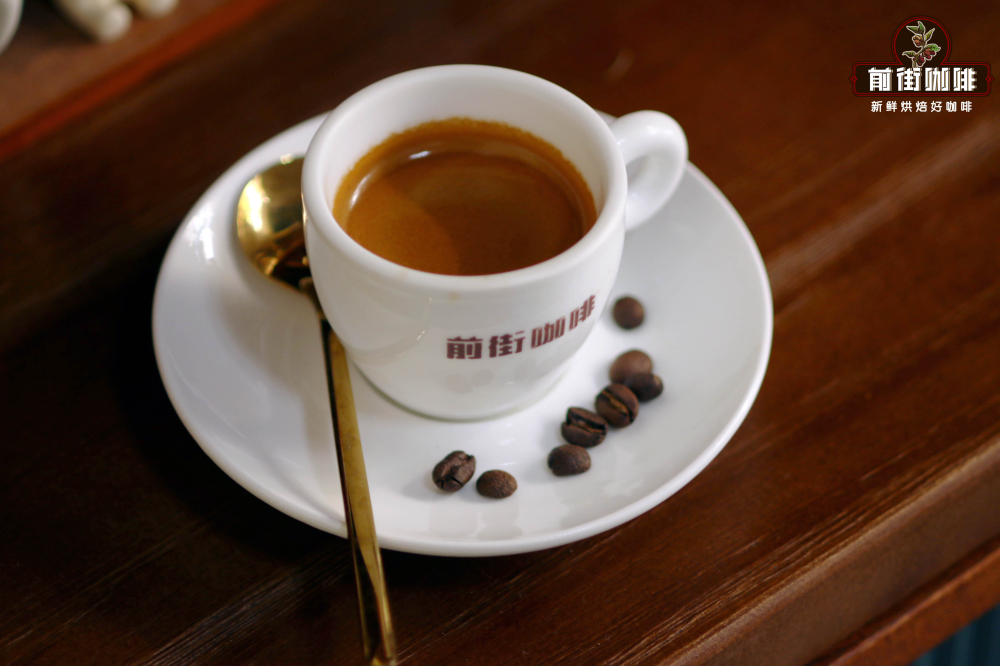
The birth time of espresso Espresso is around 1946; and this year is the official birth year of espresso. Since then, this unique coffee drink has been popular in Italy, Spain, Portugal and other southern European countries. But it wasn't until around 1986 that espresso was introduced around the world by Starbucks. Since then, people in the coffee industry around the world began to know and understand this kind of coffee. It was only about a decade earlier than the Chinese people came into contact with espresso. So the more popular and reasonable way to name it is espresso.
Espresso is a kind of life
In Italy, Espresso is simply a local life concerto. In the morning, drink a latte (Latte); then, people like to drink Espresso in the store, everyone waits in front of the bar, and after getting the first-hand coffee, they drink it in three sips. The guests in the shop knew each other and talked to each other, and even the coffee maker (Barista) took part in the chat, so the cafe became a social place.
In the United States and Taiwan, Italian-style cafes are littered with places for young people to date and chat. Most of them don't drink Espresso, only cappuccino or latte with milk. Most of these young people don't know the delicacy of Espresso. They just come here to see the atmosphere of Espresso. Presumably, this is also a kind of Espresso life!

Italian espresso Coffee: a small, heavy magnetic cup with a capacity of about 50 milliliters; filled with dark coffee with a thick layer of bright reddish brown foam on the surface of the half-full cup. A chemist will not like such a description, but will choose words that are less poetic but clearer. However, the above definition does fully describe the characteristics of a cup of espresso coffee, at least from a macro point of view:
Small volume: this means that the brewed coffee is stronger than normal.
The physical nature of the composition: the foam part of the coffee is as important as the liquid part.
These characteristics are of course the result of using a special way of percolation to brew coffee. In the following article, we will describe the characteristics of espresso coffee in detail with physical and chemical data from a sensory point of view.
Sensory characteristics of Espresso Coffee
The warm hue of foam, the strong and wonderful fragrance, the soft and smooth liquid like velvet, and the strong and persistent taste, all of which are presented in a well-brewed cup of espresso coffee, provide the drinker with the pleasure of smell, taste and vision. Only hearing is excluded from this multi-sensory experience. Between the complex chemical composition of coffee and its multiple sensory systems, a connection is created by sipping this small cup of coffee.
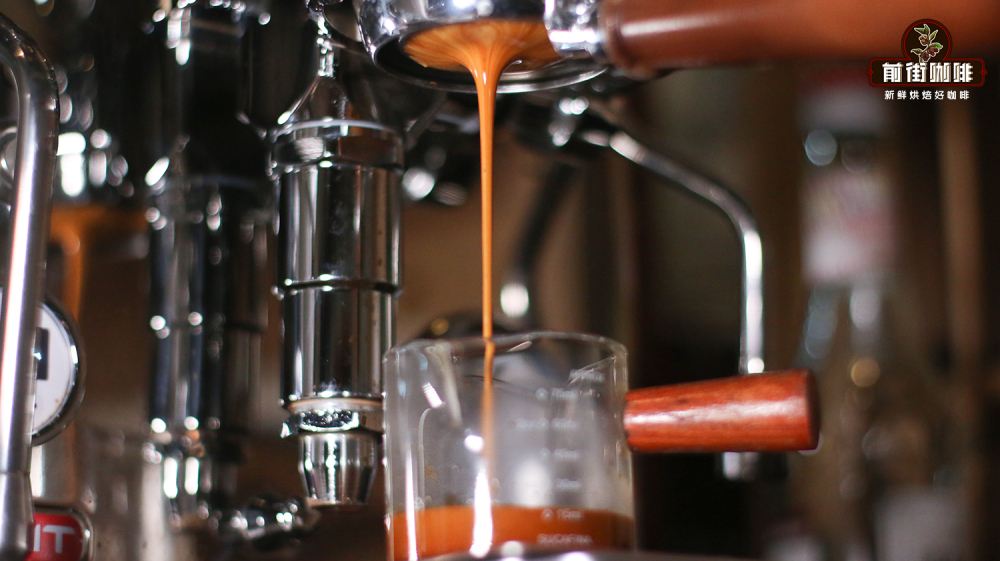
Visual features
What attracts the most visual attention of a cup of espresso coffee is the foam. The beautiful scenery of the foam is made up of tiny bubbles captured by sticky liquid and tiger skin markings formed by fragments of the cell wall floating on top of the foam.
The color and texture of the foam are very important to the drinkers of espresso coffee, because for the drinkers, the perfect foam represents the perfect coffee brewing process. Any errors in grinding, cooking, temperature or extraction will be immediately revealed by the color, texture and persistence of the foam. For example, if the foam is thin and shows a light color, uneven texture and gradual disappearance, it means that the cup of espresso coffee is not extracted enough. This may be because the grinding particles are too coarse or the water temperature is too low; if the color is dark and there is a hole in the center of the foam, it means that the porosity of the coffee pressed powder is too low or the powder content is too much. The reason for a cup of over-extracted espresso coffee is that if the water temperature is too high, it will appear white with bubbles; if it takes too long to brew, there will be white spots in the center of the foam.
Foam is also a cover for the aroma of coffee because it captures the volatile chemicals that make up the aroma of coffee. If the bean formula is suitable for brewing espresso coffee, the aroma will be pleasant, otherwise it will be disgusting. Foam is an amplifier that magnifies both the advantages and disadvantages of coffee.
Taste (mouth feel)
Texture is another important feature of espresso coffee. The oil droplets in coffee not only dissolve many flavor chemical molecules, but also increase the viscosity of coffee. Another form of tactile sensation is astringency, which has always been hated and thought to have something to do with drugs. The existence of astringency is related to the existence of immature beans, immature beans will contain polyphenols, these substances will cause oral mucosal bitterness and will interact with soluble proteins in saliva.
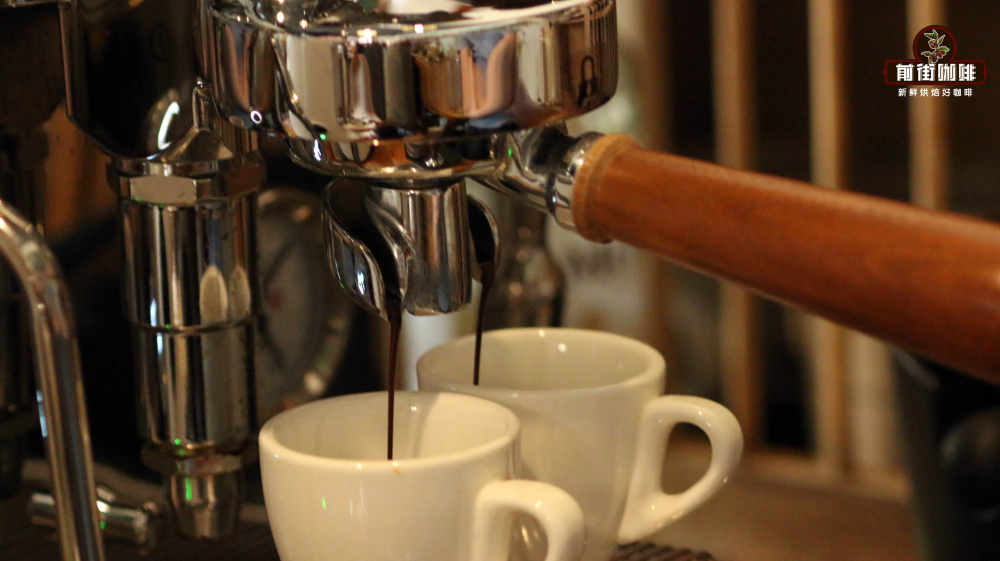
Taste (taste)
Sweetness is an important trait when appreciating a cup of espresso coffee, but sour taste is not. Consumers in different countries show significant differences in the ratio of bitter taste to sour taste of espresso coffee. Consumers in southern countries prefer bitterness and focus on texture, while in northern countries they prefer a more balanced sense of taste and think that too much bitterness is a disadvantage. This difference can also be seen in the concentration of espresso coffee, espresso in southern countries is small and strong and drinks without milk, while in northern countries, it is more diluted and served with milk or whipped cream.
Unfortunately, however, it is quite difficult to brew a cup of espresso coffee with more than 50ml without over-extraction, which is why most northern espresso coffee tastes woody or astringent, which is often described by drinkers as bitter, because when a large amount of coffee is extracted, some soluble and unpalatable substances are also brought out. The degree of roasting of coffee beans can change the ratio of bitter to sour taste of espresso coffee; deeply roasted washed coffee beans have an irritating burning taste, which is usually unpopular. Very fast baking can cause an unpleasant taste with astringent, bitter and metallic flavors.
Feeling after drinking (aftertaste)
The liquid property of Espresso coffee is quite special, its high concentration is caused by high density and high viscosity, on the other hand, the surface tension of espresso coffee is reduced by the existence of natural surface tension agent. The existence of these conflicting characteristics explains the strong taste and long-lasting taste and flavor of espresso coffee. When drinking, the surface of the tongue is bathed so that the coffee is caught by the taste buds.
At the same time, the oil droplets in espresso coffee attach to the mucous membrane of the tongue, slowly releasing volatile aromatic molecules, so these tastes and flavors can still be felt after drinking coffee for a period of time (up to 15 minutes). The fact that the tongue is covered with coffee can explain the decrease in bitterness, which can be indirectly confirmed by the following experiment: a group of subjects were asked to drink quinine solution and set the degree of bitterness at 100. then they drank quinine solution with 1% concentration of colloidal polysaccharide (carboxymethylcellulose, carboxymethylcellulose), and the subjects felt only 40% bitterness.
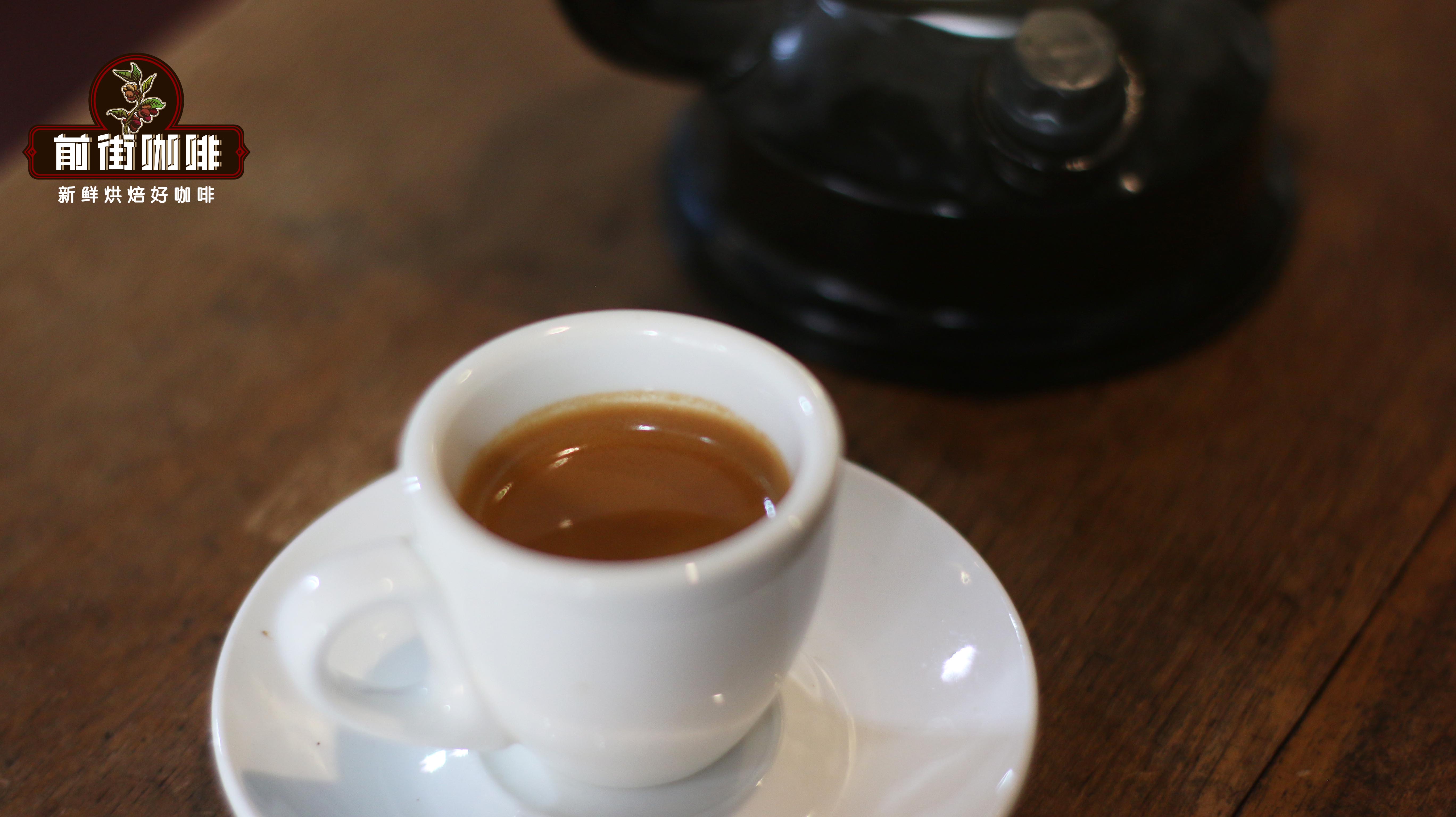
The conclusion of this experiment is that colloid can block the bitterness receptor of taste buds and reduce the bitterness perception, and the emulsified oil droplets in espresso coffee may reduce the bitterness sensation by acting like colloid. However, diluted espresso coffee increases the bitterness, because it contains hundreds of millions of bitter molecules, but the number of oil droplets is only one thousand or 1/10000, so when espresso coffee is diluted, it increases the chance of bitter molecules being caught by the receiver, resulting in the phenomenon that diluted espresso coffee is more bitter.
In general, a good cup of espresso coffee must taste sour at first and then bitter and sweet afterwards. And in the taste to have a thick texture, in the sense of smell can smell a strong aromatic flavor and can happily last for a period of time.
Espresso coffee brewing method
Whether it's hand-brewed coffee or espresso, if you want to brew it well, you must use good quality, freshly roasted coffee beans. Qianjie Coffee currently sells four types of espresso beans, all of which are sent within five days of roasting, so that every customer who places an order is the freshest coffee when they receive it. The bean cultivation period of coffee is about 4-7 days, so when the guest gets it, it is the time when the flavor is the best.
"warm Sun blend Coffee beans" consists of Ethiopian sun red cherry coffee beans (30%) and Honduran sherry bucket coffee beans (70%). It has strong wine aroma, sweet and sour vanilla cream, sweet and sour berries and roasted nut flavor.
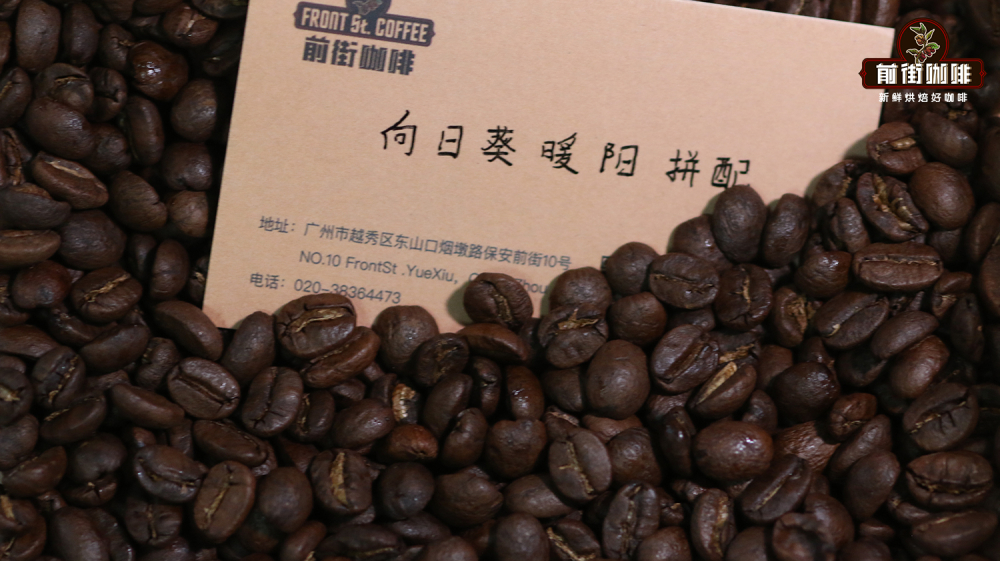
"Fine blend Coffee beans" consists of Colombian water-washed coffee beans (30%) + Brazilian half-sun coffee beans (70%), with the flavor of nuts, dark chocolate and caramel.
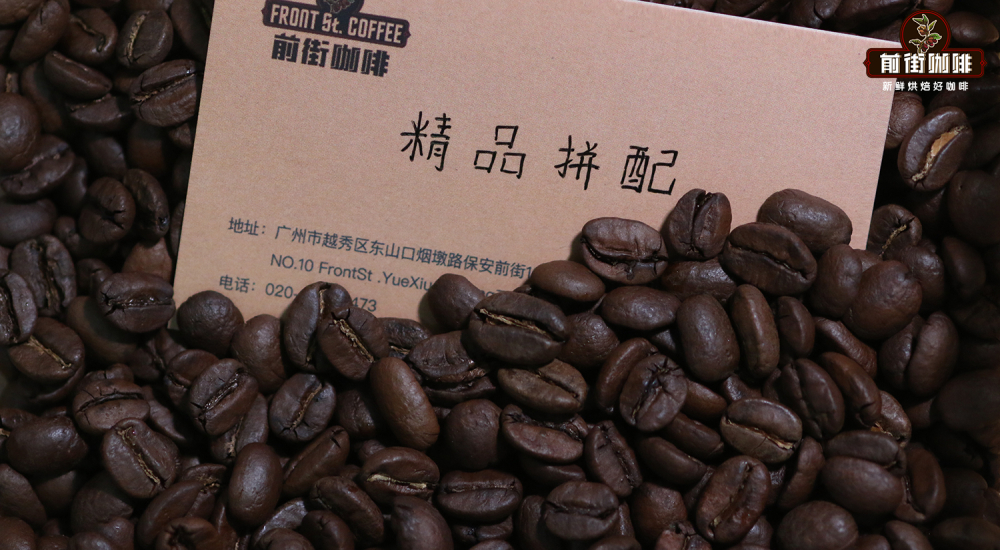
"Commercial blending coffee beans" consists of Robusta washed coffee beans (10%) + Colombian water washed coffee beans (30%) + Brazilian half-sun coffee (60%), with the flavor of nuts, cocoa and caramel.
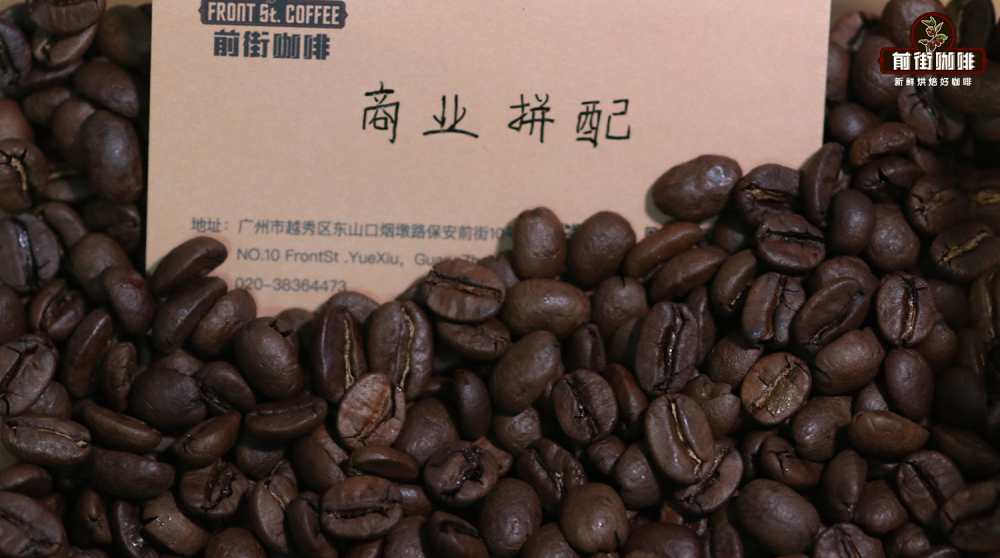
"basic blended coffee beans" consists of Yunnan washed small coffee beans (30%) + Brazilian half-sun coffee beans (70%), with soft fruit acid, caramel and nutty flavor.
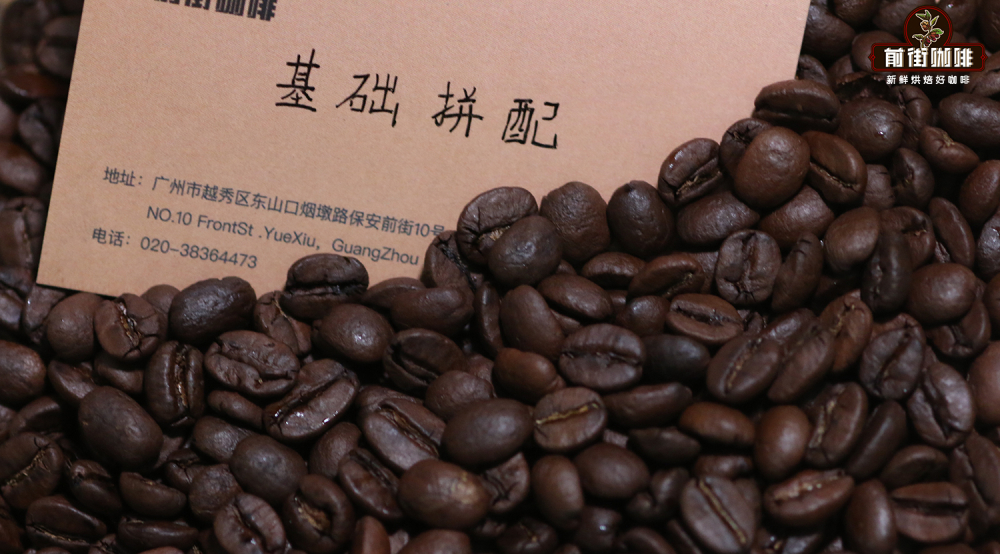
Delicious espresso is inseparable from fresh grinding. Although Qianjie coffee provides grinding service, the aroma of Qianjie coffee spreads quickly after grinding, so if you want to taste better espresso, Qianjie advises you to buy raw beans and grind them before extraction.
According to the SCA standards of the Fine Coffee Association, single-powder espresso uses 7-9 grams of double espresso: 14-18 grams of coffee powder extract 25-35 grams of coffee liquid in 20-30 seconds, extraction pressure is 9-10bar, water temperature is 90-96 ℃. Each coffee shop will adjust up and down according to the coffee beans and equipment used.
Qianjie Coffee, on the other hand, uses its own sunflower sunflower blend, with soft acidity and charming fermented wine aroma, because the water temperature of the extraction is set at 94 degrees Celsius and the extraction pressure is controlled at 10Bar.

The sensory characteristics of a cup of Italian espresso coffee should include: heavy texture, rich in fine Krima, balanced bitterness / sweetness ratio with sour taste, pleasant and long-lasting aftertaste, and free from any unpleasant flavor and defects.
Man is not an organism that can be described simply by scientific vocabulary, but a more complex creature. Many of the conditions we use to appreciate espresso coffee are still unexplained, so the current definition of espresso coffee does not include everyone's opinions and judgments. So in the world of espresso coffee, a line must be drawn between science and art that can be analyzed objectively. Art is subjective and belongs to personal creativity or creativity as well as enthusiasm for coffee. Although art is still not a science at present, after enough time and effort, it can develop into a knowledge and gradually form a skill, and eventually have the same status as science.
Important Notice :
前街咖啡 FrontStreet Coffee has moved to new addredd:
FrontStreet Coffee Address: 315,Donghua East Road,GuangZhou
Tel:020 38364473
- Prev

The record of coffee in Compendium of Materia Medica
How is coffee recorded in the Compendium of Materia Medica? it is recorded in the Compendium of Materia Medica: [coffee] shrubs, fruit kernels can be used as medicine, sex temperature, bitter and sour taste, refreshing and refreshing, stomach digestion. Can treat mental malaise, yang qi block, children accumulated food. Incompatibility: Codonopsis pilosula, Croton, alum, cold noodles. Usage: processed into powder, which is called Tishen Powder. Two dollars a day, one for milk and one for sugar.
- Next
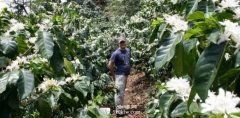
Knowledge of fine coffee to understand coffee leaf rust
The most destructive coffee tree disease is caused by coffee camel rust (Hemileia vastatrix). The disease has long occurred in coffee-producing areas such as Africa, the near East and India, Asia and Australasia. It first appeared in the Western Hemisphere in 1970 and was found in Brazil. The once thriving coffee plantations in Sri Lanka and Java were destroyed by the
Related
- Beginners will see the "Coffee pull flower" guide!
- What is the difference between ice blog purified milk and ordinary milk coffee?
- Why is the Philippines the largest producer of crops in Liberia?
- For coffee extraction, should the fine powder be retained?
- How does extracted espresso fill pressed powder? How much strength does it take to press the powder?
- How to make jasmine cold extract coffee? Is the jasmine + latte good?
- Will this little toy really make the coffee taste better? How does Lily Drip affect coffee extraction?
- Will the action of slapping the filter cup also affect coffee extraction?
- What's the difference between powder-to-water ratio and powder-to-liquid ratio?
- What is the Ethiopian local species? What does it have to do with Heirloom native species?

